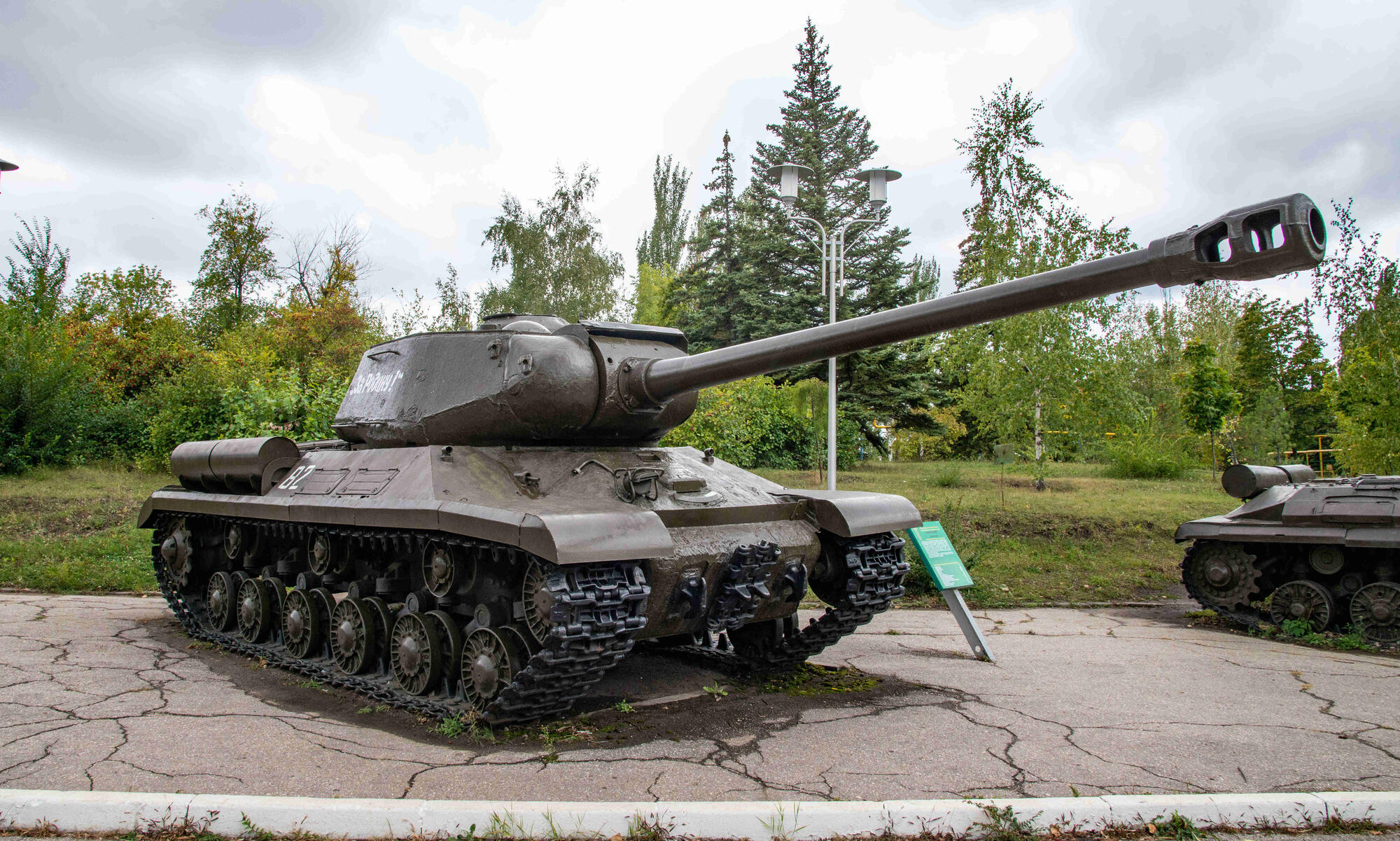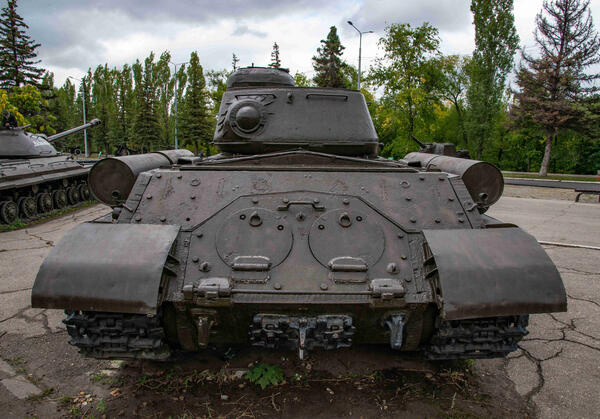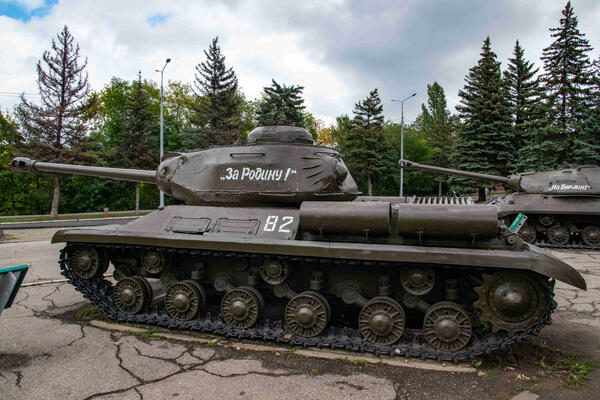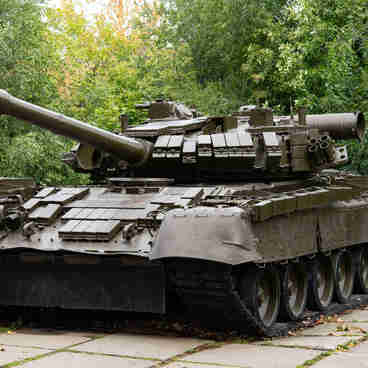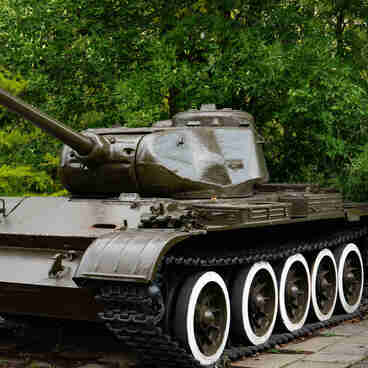The IS-2 heavy tank was developed at the Kirov Plant No. 178 in Chelyabinsk on the basis of the IS-1 tank. The abbreviation stood for “Joseph Stalin”. The project was led by Joseph Yakovlevich Kotin. The combat vehicle entered service in 1943.
The main difference between the new tank and the IS-1 was the 122mm gun D-25T. It was a shortened A-19 cannon, placed on the cradle of an 85mm D-5T tank gun and equipped with a muzzle brake.
The IS-2 heavy tank had a classic layout with the transmission in the front. The driving compartment was located in the bow of the hull. It housed a driver’s seat, two fuel tanks, a gearbox, and monitoring devices. In addition, there were two compressed air cylinders, a central fuel tap, a manual fuel pump, an electric trigger button for the bow machine gun and some spare tools.
There was an emergency escape hatch in the bottom behind the driver’s seat. The fighting compartment was located behind the driving compartment and occupied the middle part of the tank’s hull. There also were the seats of the loader and the commander of the turret (the gunner), the seat of the tank commander, the bow machine gun, the main part of the ammunition, batteries, and heaters.
The rods of gearbox control linkage were laid along the bottom of the fighting compartment. A turret was installed above the fighting compartment, which housed a cannon and two machine guns, sights and surveillance devices, part of the ammunition, a radio station, turret rotation mechanisms, a fan of the fighting compartment and some spare tools.
Separate-loading ammunition was used in the tank. In 1944, the tank received an inclined upper front part of the hull, while the driver’s observation hatch was replaced with a slit that could be closed with a glass block.
The main purpose of the IS-2 was to target enemy heavy tanks and self-propelled vehicles. The armament allowed this tank to destroy any German tanks at a distance of up to 2500 m. The German command forbade its tankers to openly engage the IS-2s.
A total of 3483 heavy tanks were manufactured, and 60 of them were assembled in Leningrad at the reopened Kirov Plant. This machine remained in service with the Soviet Army until the early 1960s.
The main difference between the new tank and the IS-1 was the 122mm gun D-25T. It was a shortened A-19 cannon, placed on the cradle of an 85mm D-5T tank gun and equipped with a muzzle brake.
The IS-2 heavy tank had a classic layout with the transmission in the front. The driving compartment was located in the bow of the hull. It housed a driver’s seat, two fuel tanks, a gearbox, and monitoring devices. In addition, there were two compressed air cylinders, a central fuel tap, a manual fuel pump, an electric trigger button for the bow machine gun and some spare tools.
There was an emergency escape hatch in the bottom behind the driver’s seat. The fighting compartment was located behind the driving compartment and occupied the middle part of the tank’s hull. There also were the seats of the loader and the commander of the turret (the gunner), the seat of the tank commander, the bow machine gun, the main part of the ammunition, batteries, and heaters.
The rods of gearbox control linkage were laid along the bottom of the fighting compartment. A turret was installed above the fighting compartment, which housed a cannon and two machine guns, sights and surveillance devices, part of the ammunition, a radio station, turret rotation mechanisms, a fan of the fighting compartment and some spare tools.
Separate-loading ammunition was used in the tank. In 1944, the tank received an inclined upper front part of the hull, while the driver’s observation hatch was replaced with a slit that could be closed with a glass block.
The main purpose of the IS-2 was to target enemy heavy tanks and self-propelled vehicles. The armament allowed this tank to destroy any German tanks at a distance of up to 2500 m. The German command forbade its tankers to openly engage the IS-2s.
A total of 3483 heavy tanks were manufactured, and 60 of them were assembled in Leningrad at the reopened Kirov Plant. This machine remained in service with the Soviet Army until the early 1960s.
